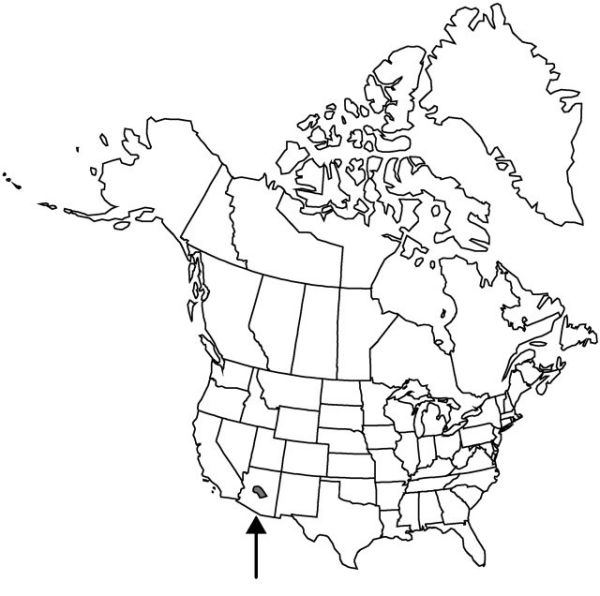Agave murpheyi
Contr. Boyce Thompson Inst. Pl. Res. 7: 83, fig. 1. 1935.
Plants acaulescent, freely suckering; rosettes cespitose, 6–12 × 8–14 dm, open. Leaves ascending, 50–80 × 6–10 cm; blade light glaucous green to yellow green, frequently lightly cross-zoned, spatulate, firm, adaxially concave toward apex, abaxially convex toward base; margins undulate, armed, teeth single, well defined, mostly 3–4 mm, ca. 1–2 cm apart; apical spine dark-brown to grayish, conical, 1.2–2 cm. Scape 3–4 m. Inflorescences narrowly paniculate, prolifically bulbiferous; bracts persistent, triangular, 10–15 cm; lateral branches 10–16, slightly ascending, comprising distal 1/4 of inflorescence, longer than 10 cm. Flowers 12–21 per cluster, erect, (5.1–) 6–7.5 cm; perianth cream, apex purplish or brownish, tube urceolate, 14–20 × (11–) 14–19 mm, limb lobes erect, unequal, (14–) 15–20 mm; stamens long-exserted; filaments inserted unequally at or slightly above mid perianth-tube, erect, yellow, (3.3–) 4.5–5 cm; anthers yellow, (16–) 22–25 mm; ovary (1.8–) 2.2–4 cm, neck slightly constricted, (0.5–) 4–6 mm. Capsules short-pedicellate, obovate to oblong or ovate, 5–7 cm, apex short-beaked. Seeds (7–) 9–11 mm. 2n = 60.
Phenology: Flowering late winter–spring.
Habitat: Near drainage systems in desert scrub
Elevation: 400–1000 m
Distribution

Ariz., nw Mexico
Discussion
Of conservation concern.
Agave murpheyi, used by the Hohokam for food, is known only from around pre-Columbian agricultural and settlement areas. The plants (including bulbils) are easily transported and transplanted. Agave murpheyi hybridizes with A. chrysantha in Arizona.
Selected References
None.
Lower Taxa
"thick" is not a number. "thin" is not a number."dm" is not declared as a valid unit of measurement for this property."dm" is not declared as a valid unit of measurement for this property.